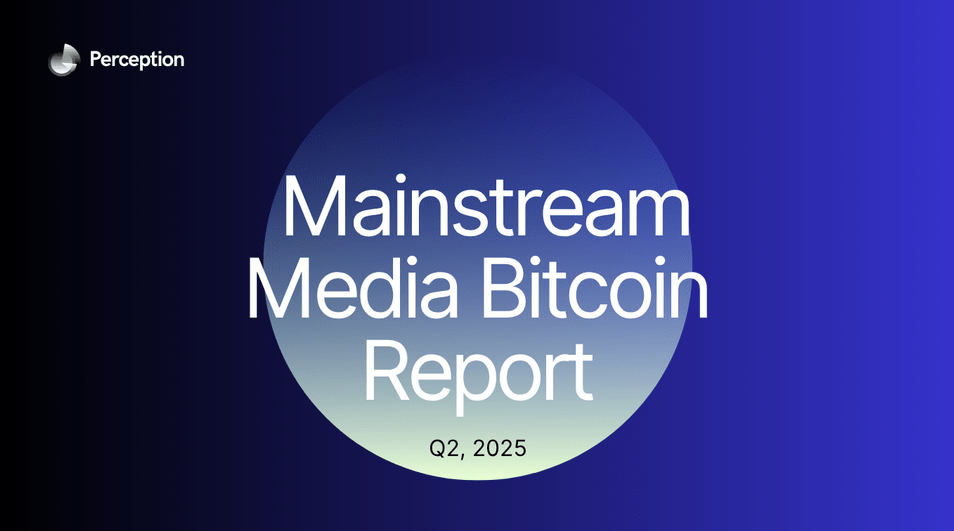Bitcoin Soared—But Mainstream News Was Missing In Action, Study Reveals

Bitcoin Surged in Q2—But Major News Outlets Largely Looked the Other Way, Study Finds
Summary: Despite Bitcoin’s strong performance in Q2 2025, a new study by market intelligence firm Perception shows that mainstream financial media offered limited and often negative coverage of the cryptocurrency, with elite outlets notably subdued in their reporting. Meanwhile, high-output business media ramped up their Bitcoin content, highlighting growing divergence in editorial strategies.
Media Coverage Overview
From April to June 2025, 1,116 articles mentioning Bitcoin were published across 18 leading global media outlets, according to Perception. Of those, 31% carried a positive sentiment, 41% were neutral, and 28% skewed negative.
Elite Media Largely Silent
Leading publications such as the Wall Street Journal, Financial Times, and the New York Times offered surprisingly limited coverage. Each published just between 2 and 11 Bitcoin stories across the entire quarter—an unexpectedly low volume considering Bitcoin’s ongoing presence as a high-performing global asset.
During the same period, these outlets devoted far more space to topics like central bank policy and corporate earnings, treating Bitcoin as a marginal topic rather than a mainstream market phenomenon.

Financial News Heavyweights Pick Up the Slack
By contrast, prominent business media such as Forbes, CNBC, and Fortune delivered more active and balanced Bitcoin coverage.
Forbes led the field with 194 articles—43% positive and 24% negative—often emphasizing retail adoption and institutional interest. CNBC published 141 articles, with a similarly upbeat 42% labeled positive and only 17% negative. Fortune added 117 entries to the crypto conversation, split between 25% positive and 18% negative.
These platforms treated Bitcoin as a legitimate market sector, highlighting its diverse growth narratives and real-world usage trends.

Outlets Leaning Negative Still Paid Attention
While some organizations maintained coverage with a more skeptical tone, they still dedicated significant space to Bitcoin. The Independent produced 45 articles, 42% of which conveyed negative sentiment. Fox News followed with 32 stories, including 38% negative, often focusing on crime and security risks.
Barron’s contributed 65 articles with a fairly even split—25% positive versus 27% negative headlines—making its parent paper, the Wall Street Journal’s mere two mentions, appear especially reserved by comparison.
Why Real-Time Media Monitoring Matters
The contrast in reporting volume and tone among major outlets reveals a key insight for investors and market participants: relying on only a few elite sources could result in a distorted or delayed reckoning of Bitcoin market trends.
Analysts at Perception recommend setting up real-time dashboards to monitor headline frequency and sentiment across diverse media sources. Doing so allows investors to track momentum shifts and potential news-based catalysts before they appear in quarterly recaps.
The Broader Implications for Readers
This study underscores the importance of media diversity. For readers depending solely on outlets like the Journal or FT, Bitcoin may appear as a fringe or speculative asset. But those following Forbes or CNBC perceive it as a developing institutional frontier in global finance.
The clear takeaway: broaden your news feeds. As Bitcoin continues to mature, understanding its media perception could be as important as tracking its price.
Featured image from Meta, charts via TradingView and Perception












https://t.me/s/Official_1win_kanal/1650
https://t.me/s/Webs_1WIN
Официальный Telegram канал 1win Casinо. Казинo и ставки от 1вин. Фриспины, актуальное зеркало официального сайта 1 win. Регистрируйся в ван вин, соверши вход в один вин, получай бонус используя промокод и начните играть на реальные деньги.
https://t.me/s/Official_1win_kanal/3811
https://t.me/s/Official_1win_kanal?before=2054